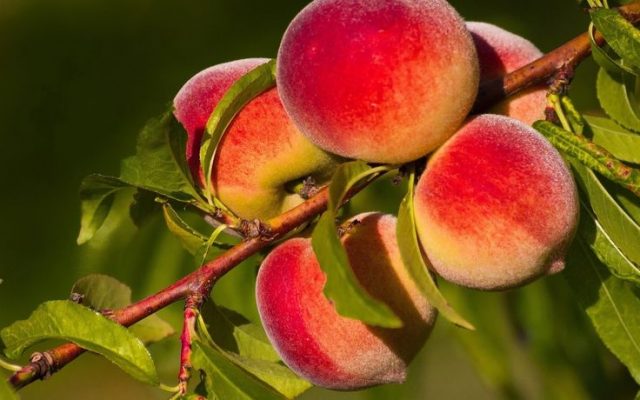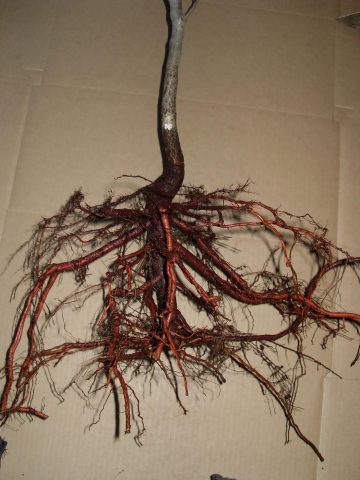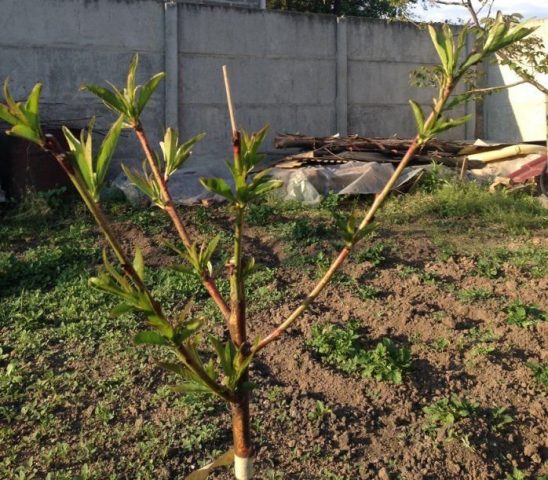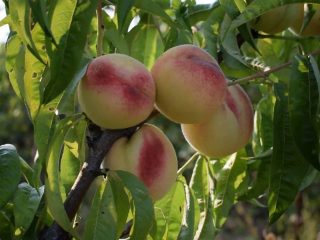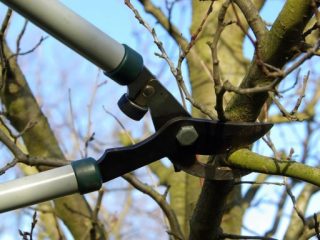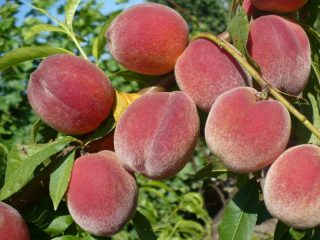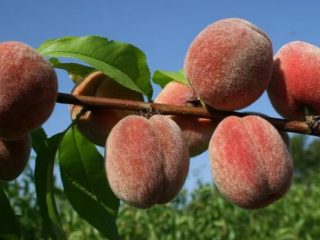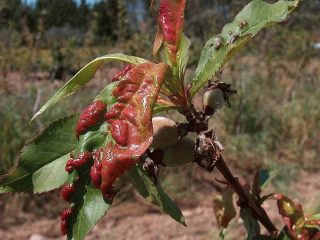Content
Planting peach in spring is the best choice for the middle zone climate. In autumn, due to the early onset of cold weather, there is a risk that the young tree will not have time to take root and will suffer in winter. For a delicate southern crop, the gardener carefully selects the location and enriches the soil with nutrients.
Principles of growing peach
Planting and caring for peaches in the middle zone is quite labor-intensive, because plants of southern origin require increased attention. Even winter-hardy varieties bred specifically for cultivation in harsher conditions will have to be carefully prepared for winter. Peaches can withstand the cold if they were planted in accordance with the rules and agrotechnical care requirements throughout the warm season. We also carefully mulched the tree trunk circle in the fall so that the roots would not be damaged by winter weather.
In addition, pay attention to the healthy condition of leaves and branches during prolonged rainfall with fairly low summer temperatures. In such weather, the risk of weakening the plant and infection with fungal diseases increases.
Trees are not picky about the composition of the soil, but its structure is important. Peaches are planted on light, drained and breathable soils. Arrange a sufficient drainage layer, up to 15-20 cm.
What variety of peach should I plant?
Peaches have now been bred for planting in those climatic zones where frosts drop to -25-30 °C. Special achievements have been achieved by domestic, as well as Belarusian, Ukrainian, Canadian and American breeders. So planting peaches in the Moscow region has ceased to be a fantasy story. Trees have also been bred whose flowers can withstand sub-zero spring weather. Planting a peach in the middle zone dictates the choice of a seedling variety that is not only frost-resistant, but also one with a late flowering period, when the threat of return frosts has passed. The main criteria for selecting varieties for sites in those regions where there are severe winters, capricious spring and early autumn are:
- early ripeness;
- winter hardiness and the ability of peach to quickly restore wood after freezing;
- late flowering.
Planting only early and mid-ripening varieties is explained by the fact that late peaches, ripening in September-October, will not have time to gain sugar before frost. Early cultivars bloom in April and early May, but the buds are not afraid of frost down to -7 °C. The fruits are harvested from mid-July to the second ten days of August.The mid-ripening group ripens after August 10-15, fruiting lasts until the end of the month. Such peach seedlings are suitable for the Moscow region, as well as the Ural and Siberian regions, provided they are planted in a cozy, draft-free, sunny place.
The varieties of peaches differ in productivity and frost resistance:
- Golden Moscow;
- Fury;
- Frost;
- Laureate;
- Red Maiden;
- Redhaven;
- Kyiv early;
- Voronezh bush.
Sochny, Novoselkovsky, Vavilovsky, Lesostepnoy early, Yelgavsky, Donskoy, Favorit Morettini, Collins, Harbinger, White Swan, columnar Honey, Steinberg and many others have also proven themselves well.
How to plant a peach correctly
Productivity, winter hardiness and low susceptibility of peach to diseases largely depend on the choice of planting site and filling the pit with nutrients.
When is the best time to plant a peach?
In the middle zone, peaches are planted from April 10-20. If spring is early, planting is carried out at the end of March. A strong seedling will immediately grow. The leaves will not be damaged by spring frosts, the root system will not dry out provided regular watering, and will take root well at the beginning of the warm season.
Where to plant peach
The location is carefully selected, taking into account the preferences of the light- and heat-loving culture:
- a well-lit planting area will ensure the juiciness of the fruits;
- under the protection of a building on the south or southwest side, the peach will receive additional heat from the walls heated by the sun;
- a barrier to cold winds will to some extent protect the seedling from freezing of flowers and ovaries, which cannot withstand temperatures of -3 °C, although the buds can withstand up to -7 °C;
- avoid shaded places where the wood of young shoots does not ripen, resulting in weak formation of flower buds or even death of the tree;
- unsuccessful planting of peach in lowlands with marshy soil and stagnant cold air.
Preparing the soil and planting hole
In the fall, at the site where the tree is planted, it is necessary to carry out preparatory work, dig up the area, add compost, humus, 60 g of superphosphate and 30 g of potassium sulfate per square meter. When the weather permits in the spring, as early as possible:
- form a landing pit with a diameter of 0.7-0.8 m and the same depth;
- a high drainage layer is placed on the bottom, up to 15-20 cm;
- then the top fertile layer of garden soil is mixed with the same amount of humus or compost, adding 200 g of wood ash, 80-100 g of superphosphate and 50 g of potassium fertilizer or complex preparations according to the instructions.
After purchasing the seedling, planting is carried out.
Selection and preparation of seedlings
When buying a peach, inspect its roots, they should be:
- elastic, not overdried;
- with dense fibrous processes;
- without damage or growths.
Peaches often die in the summer after planting because the roots have dried out during storage. They buy those trees whose buds are also alive, not dry, and whose trunk and branches are intact, without cracks or scratches. Seedlings are transported by wrapping the roots in damp paper or cloth and polyethylene on top to retain the moisture remaining in the roots.If the weather is sub-zero, the trunks are also covered with something so that they do not suffer from the frosty air flow.
Sometimes peach seedlings of early varieties, as well as other ripening periods, are bought in the fall to be stored in the basement yourself. The room temperature should not rise above + 5 °C. The roots are placed in a box with wet sawdust so that the root collar is open. Before storing, remove all leaves from the seedling. In winter, they systematically check the condition of the tree, making sure that there is no waterlogging.
How to plant a peach
All stone fruit trees are planted in the same way:
- a mound is formed from the laid fertile layer, on which the roots of the seedling are straightened;
- the plant is placed so that the root collar rises above the soil level by 5-7 cm;
- a support is hammered into the hole;
- sprinkle the peach roots with the remaining fertile substrate;
- the soil is compacted and watered;
- mulch is placed on top to retain moisture.
What to do after landing
In the spring, peach seedlings must be mulched after planting so that the hot sun does not dry out the soil and roots:
- humus;
- compost;
- buckwheat husk;
- needles;
- agrofibre.
After planting, the peach is pruned:
- the central shoot is shortened;
- 3-4 strong branches are left below;
- side branches are cut to 3 buds.
- after 7-10 days, the seedling is treated with fungicides against fungal diseases.
If there is enough rainfall in the summer, the plants are watered 3-4 times per season with large amounts of water, up to 30-40 liters. In hot weather, spring-planted seedlings are moistened with 15-25 liters every week.Water is poured not along the trunk circle, but into a groove formed along its perimeter with high sides, up to 12-15 cm deep, 10 cm wide. Particular attention is paid to treating peaches with fungicides if the summer turns out to be rainy and cool. Culture suffers from such weather. In the first year after planting, peaches are not fed, since the trees have enough nutrients contained in the substrate. Only in September or October, before moisture-recharging irrigation, when the peach is given up to 40-50 liters of water, 2 tablespoons of superphosphate and potassium fertilizer are added to the soil.
After feeding and watering the young tree before winter, the tree trunk circle is mulched with a high layer of humus or compost. The root system of the crop is sensitive to low temperatures and may freeze without preparation. It is advisable to install protection from dry plant residues or an agrofibre tent around the stem during the first 2-3 winters after planting. Winter-hardy varieties may suffer from spring frosts, because the crop leaves the dormant period early.
Wood that recovers well after freezing will yield a harvest only the next year, subject to fertilizing:
- in the spring, add 3 tablespoons of ammonium nitrate or 2 tablespoons of urea;
- in summer they support with potassium supplements;
- in the fall they are fertilized with phosphate preparations.
Transplanting a peach to another place
It has been noted that in the south trees take root more easily after transshipment, which is facilitated by favorable climatic conditions. It is better to replant peach in the fall, when it enters its dormant period. An adult tree after 7 years very rarely takes root in a new place. Younger plants tolerate replanting more easily, but the procedure is only carried out in cases of extreme necessity.
They try to preserve the root system as much as possible, widely digging up a previously well-filled earthen ball - up to 1.2 m, to a depth of 80-90 cm. It is wrapped in film or tarpaulin on all sides in order to be safely removed from the hole and moved. The same fertilizers as when planting are placed at the bottom, 2-3 buckets of nutritious soil mixed with humus. Water with 30-40 liters of water and carefully install the tree, freeing the roots from the available material that pulled the soil together when carried. Then water and apply a layer of humus mulch. In spring, the tree is pruned, taking into account the shortened root system.
Important details you need to know before boarding
When planning to grow peaches, they study the details of planting, placing and caring for plants.
At what distance to plant peaches?
It is recommended to maintain an interval between trees of up to 4-5 m. The peach planting scheme provides that the fruit forms are separated from each other by a distance equal to the sum of their crown heights. Then the plants freely use nutrients from the soil. Intensive methods of growing crops involve compact planting followed by active feeding of trees with mineral preparations.
What can you plant next to a peach?
By providing peach trees with proper planting and care in the spring, possible diseases are prevented not only by treating them with fungicides, but also by thoughtful placement:
- neighbors from the north, west and east at a distance of up to 6 m can be neutral apple and pear trees;
- The seedling should not be placed next to plum, apricot or cherry, which are often susceptible to fungal diseases;
- tall ornamental trees will oppress the peach with both shade and uncontrolled growth;
- do not plant where strawberries, melons and nightshades were grown, since the plants have a common predisposition to verticillium;
- Close plantings of alfalfa and clover suppress young trees.
What year does a peach bear fruit after planting?
A well-placed seedling, not damaged by frost, blooms in the third year of development. After planting, the peach begins to bear fruit more abundantly in 5-6 years. Early varieties ripen 85-95 days after flowering, and middle varieties - after 3-4 months.
Conclusion
Planting peach in the spring gives the plant the opportunity to develop in favorable conditions of the warm season. Carefully select a suitable location and follow the recommendations for caring for the plant.
